Mastering Ant Infestation Removal: Your Cost-Effective Guide
Ant infestations can disrupt the comfort and safety of your home, prompting homeowners to consider effective ant-control strategies. The cost to remove these pests depends on factors such as ant species, infestation severity, home layout, treatment methods, and accessibility. This guide explains what drives ant removal pricing and offers insights to help homeowners in the Atlanta, GA metro area make informed pest control decisions.
Factors Influencing the Cost of Ant Infestation Removal
Several factors determine the cost of ant removal. Identifying the ant species, assessing the extent of the infestation, and choosing the treatment method all impact pricing.
Identifying the Ant Species Affects Removal Expenses
Different ant species require unique treatments. For example, carpenter ants may need structural assessments because of potential wood damage, while fire ants often require high-intensity baiting and mound treatments. Accurate identification prevents misdiagnosis, which can lead to ineffective treatments and increased costs.
The Severity of the Ant Problem Impacts the Overall Cost
The level of infestation influences the amount of work needed. A single ant trail might require a minor treatment, but multiple nests or widespread colonies can demand extensive pesticide applications and repeated services, driving up costs.
Your Home's Size and Layout Can Alter Treatment Pricing
Larger homes or complex layouts generally require more pesticide and labor. Multiple entry points and hard-to-reach areas can add to treatment time and costs, as technicians must cover more ground to eradicate the infestation fully.
The Chosen Ant Extermination Method and Its Associated Costs
Extermination methods vary in cost. Conventional chemical sprays, baits, gels, and eco-friendly options like diatomaceous earth each come with different price tags. Faster chemical treatments may cost more initially and require follow-ups, while eco-friendly solutions might need longer treatment periods but offer lower toxicity.
Location of the Ant Nests and Accessibility Challenges
Ant nests hidden in crawl spaces, under concrete slabs, or within wall voids increase treatment difficulty. These hard-to-reach spots often require specialized equipment, extra labor, and sometimes even structural modifications, which can further raise the overall cost.
Average Costs for Professional Ant Extermination Services
Understanding typical cost ranges helps in planning your budget.
Typical Price Range for a One-Time Ant Treatment Visit
A one-time treatment for a minor infestation generally costs between $150 and $300. More severe infestations or specialized treatments can push prices to $500 or more for a comprehensive session.
Costs Associated With Initial Consultation and Home Inspection
Many companies perform an initial inspection, usually charging $50 to $100. This fee is sometimes waived if you proceed with treatment. The inspection identifies the ant species, the infestation extent, and helps in developing an effective treatment plan.
Pricing for Ongoing or Recurring Ant Control Plans
For persistent problems, recurring service plans are available, typically costing between $50 and $150 per month. These plans monitor ant activity and offer periodic treatments, which can be more cost-effective over the long term by preventing major infestations.
Comparing Quotes: How Much Does It Cost to Remove an Ant Infestation From My Home?
When reviewing quotes, compare not just the price but also the treatment scope, follow-up visits, and any guarantees provided. Lower upfront costs may sometimes mean fewer services or lower long-term value, so consider overall reliability and warranty terms.
Cost Differences for Various Types of Ant Infestations
Different ant species require different approaches, resulting in varying costs.
Expense for Carpenter Ant Removal and Potential Structural Repair Considerations
Carpenter ants can damage wood. Removal might include structural evaluations and possible repairs, increasing costs by 20% to 50% over standard ant treatments.
Financial Outlay for Fire Ant Colony Elimination
Fire ant colonies, known for their aggressive nature and painful stings, often require intense baiting and outdoor treatments. Typically, treatment ranges between $250 and $400, reflecting the need for potent chemicals and possibly multiple visits.
Price to Address Pharaoh Ants or Sugar Ants in Your Residence
Pharaoh and sugar ants are small and can infiltrate tiny niches. Their treatments often involve thorough baiting combined with follow-up visits, usually costing between $200 and $350. In some cases, a monthly maintenance plan may be more economical.
Costs for Treating Common Household or Pavement Ants
For common household ants, which usually pose less of a structural threat, basic treatments can cost between $100 and $250. However, repeated treatments may be necessary due to seasonal reinfestations.
Breaking Down Additional Services and Potential Extra Charges
Extra services and fees can further impact your final bill.
Fees for Emergency or Same-Day Ant Removal Services
If you require immediate action due to a sudden outbreak, many companies offer emergency services at a premium—often an extra 25% to 50% on the standard rate.
The Price of Follow-Up Visits and Guarantee Periods
Some companies include follow-up visits as part of their service guarantee. However, if the infestation persists, additional visits might cost between $50 and $150 each. Always review the service agreement details.
Costs for Preventative Measures to Avoid Future Ant Problems
Sealing entry points and applying preventative treatments can add another $100 to $300 to your bill but may help reduce future infestations and overall costs.
Charges for Eco-Friendly or Specialized Ant Treatment Options
For those preferring environmentally safe methods, eco-friendly treatments using diatomaceous earth or vinegar-based solutions typically range from $150 to $350, reflecting both the cost of safer products and longer treatment duration.
Travel Surcharges Based on Your Home's Location
Homes in remote or difficult-to-access areas may incur travel surcharges of 10% to 20% on top of the base service cost.
DIY Ant Removal Versus Professional Extermination Expenses
Weighing DIY methods against professional services is important.
Estimating Costs for Do-It-Yourself Ant Control Products
DIY solutions such as ant baits, sprays, and traps are available for $20 to $100. While initial costs are lower, these products may be less effective for large or stubborn infestations, potentially leading to repeated expenses.
Weighing the Financial Effectiveness of Home Remedies for Ants
Home remedies using vinegar, soapy water, or diatomaceous earth might offer temporary relief but often do not eliminate the root cause of the infestation. Their limited effectiveness can result in ongoing issues and additional costs over time.
Long-Term Value Professional Ant Removal Offers Over DIY
Although professional treatments cost more upfront, they often provide a lasting solution with lower recurrence rates and reduced long-term repair needs. This expertise can offer both peace of mind and overall cost savings.
Hidden Expenses and Risks of Ineffective DIY Ant Treatments
DIY methods may overlook hidden colonies, causing recurring infestations. Improper use of pesticides can also create risks for family members and pets, potentially leading to extra expenses if additional services or repairs become necessary.
Saving Money on Ant Infestation Removal for Your Property
Cost-saving strategies can make professional ant removal more affordable.
Obtaining Multiple Quotes From Pest Control Professionals
Always get several quotes. Comparing different companies ensures competitive pricing and helps you understand the overall value of each service, including follow-up visits and preventative measures.
Inquiring About Seasonal Discounts or Service Bundles
Many companies offer seasonal discounts or bundled services—such as combining ant control with termite or rodent treatments—that can lower the overall cost.
Implementing Preventative Home Maintenance to Reduce Future Costs
Simple maintenance tasks like sealing entry points, trimming nearby vegetation, and regular cleaning can significantly reduce the chances of reinfestation, saving you money on future treatments.
Understanding Service Agreements and What They Include
Read service contracts carefully. Knowing the specifics—such as the number of follow-up visits, guarantee periods, and any potential extra fees—helps you avoid unexpected costs and ensures you receive full value for your investment.
Recognizing When a Small Infestation Can Be Managed at a Lower Cost
For minor issues with only a few ant trails, a targeted DIY treatment may suffice, potentially avoiding the higher expense of comprehensive professional services.
Frequently Asked Questions
Q: How do I know which ant speciesis causing my infestation? A: A professional pest control technician can identify the species during an inspection to guide the best treatment plan.
Q: Can a one-time treatment completely eliminate an ant infestation? A: Minor infestations may be resolved with a single treatment, but severe or established colonies often require follow-up visits.
Q: Are eco-friendly ant treatments more expensive than traditional methods? A: Eco-friendly options typically cost a bit more due to the use of safer products, but they are preferred for households with children or pets.
Q: Is it more cost-effective to manage ant infestations myself? A: DIY methods may be cheaper upfront, but professional treatments usually provide a long-term solution that reduces overall costs and prevents structural damage.
Q: What additional charges should I expect with professional ant removal? A: Besides the base fee, look for extra charges related to emergency services, follow-up visits, and any needed repairs for structural damage.
Final Thoughts
Urban Pest Control’s expert analysis illuminates the key factors influencing the cost of ant removal. By understanding the species involved, evaluating infestation severity, and comparing treatment options, homeowners can make informed decisions that save money over time. A well-planned ant removal strategy not only addresses current issues but also helps prevent future infestations, ensuring a pest-free, secure home environment.



